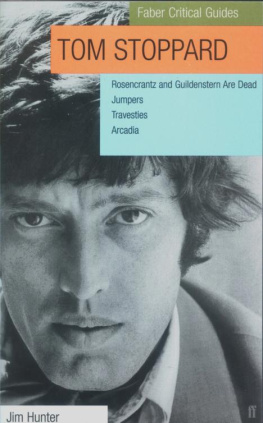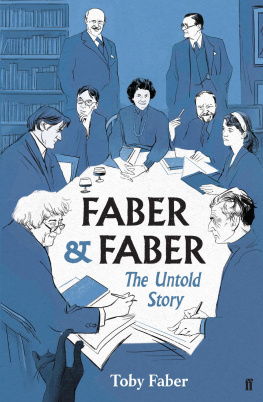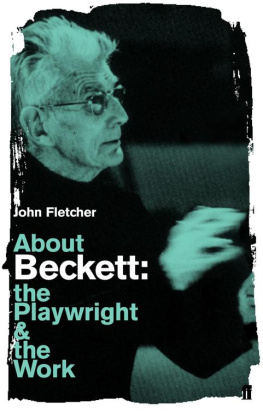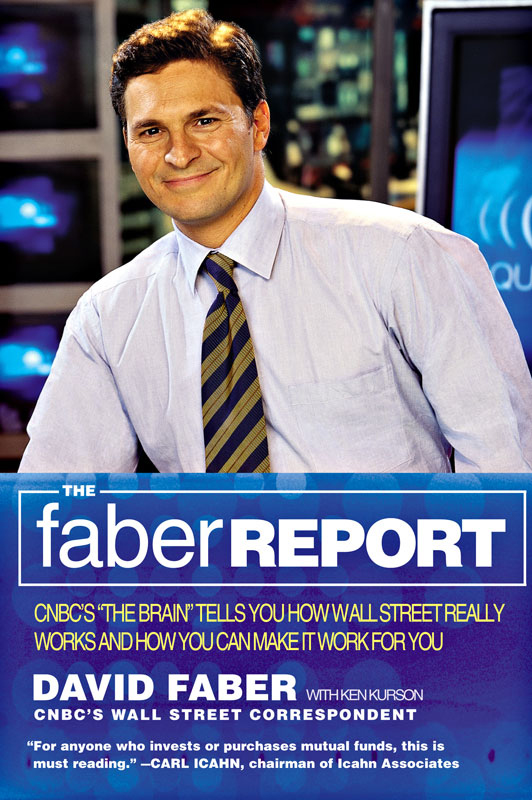Copyright 2002 by David Faber
All rights reserved. No part of this book may be reproduced in any form or by any electronic or mechanical means, including information storage and retrieval systems, without permission in writing from the publisher, except by a reviewer who may quote brief passages in a review.
Little, Brown and Company
Hachette Book Group
237 Park Avenue
New York, NY 10017
First eBook Edition: May 2002
ISBN: 978-0-7595-2725-6
Visit our website at www.HachetteBookGroup.com.
Look at any acknowledgments page in the book of a first-time author and youre likely to read about how much harder it was to write the book than he could ever have imagined. I wish I could tell you different.
Writing this book was hard. Very hard. And its only thanks to a lot of great people that it was possible at all.
This book is drawn from my experiences as a financial reporter over the past fifteen-plus years. During those years, it was always the people on the other end of the phone or the other side of a dinner table who were teaching me about Wall Street. Ive made some wonderful friends as a result of all that reporting, and many of those same people have been instrumental in helping shape the content of this book. But its a funny thing about a reporters sources. They dont really like seeing their names in print. So to the countless men and women in whose debt I firmly remain, I offer my deepest appreciation. You know who you are.
There are a handful of people to whom I can offer public thanks for their time and wisdom. My thanks to Larry Robbins, Lee Degenstein, Gary Kaminsky, Bruce Prestcott, Alison Rosen, Hope Taitz, George Sard, Seth Tobias, Stuart Conrad, Bob Olstein, Carl Icahn, Rick Shottenfeld, and David Berman.
I would also like to express my gratitude to a number of very smart risk arbitrageurs who have taught me a great deal through the many years Ive covered mergers and acquisitions: Morgan Rutman, David Simon, and Rick Schneider. Im afraid that all the lawyers and bankers with whom Ive shared confidences must remain in the shadows. But I owe a great deal to them as well.
I learned how to be a reporter in the trenches of the newsletter division of Institutional Investor. It was a place where old-fashioned reporting skills were stressed and being first with the news was everything. I owe a great deal to the man who still runs that division, Tom Lamont, who taught me to be fearless in pursuit of a story. The constant urgings of my first editor at Institutional Investor, Mark Voorhees, to make more phone calls and always be skeptical have stayed with me to this day.
I also want to thank all my colleagues at CNBC, whose professionalism day in and day out have helped to make our network the success it is. Ive enjoyed every minute of my eight and a half years with them. Ive had a particularly good time every morning, thanks to my partners on Squawk Box, Joe Kernen and Mark Haines, and thanks to the shows longtime producer, Matt Quayle. At CNBC, I also want to thank my assistant Sonya Uribe, who is simply the most pleasant person Ive ever had the pleasure of working with, and Samantha Wright, who has been the most helpful person Ive ever worked with.
Two of my closest friends are a part of Wall Street. For years, Steve Lipin was my fierce competitor from his post at the Wall Street Journal in addition to being a loyal friend. Hes always been a great supporter, despite digging up many scoops that might otherwise have come my way. My dear friend Russell Sarachek is one of the best hedge fund managers I know. And I know plenty. Hes also been a great help on this book.
My friend and former agent David Fish of encouraged me to write this book for years. When I finally responded, it took me over a year to write the proposal. That led me to the conclusion that unless I found some help, the book might take ten years to write. I found that help in the person of Ken Kurson, a student of Wall Street whose attitude matches my own. Kens tireless enthusiasm for this book, not to mention his ability to put up with me, made our every moment fun and productive. I have no doubt that without his enormous contribution, this book would have suffered greatly.
Ken would like to acknowledge a number of people: his wife, Rebecca; Michael Craig for his invaluable research; Bob Safian, David Granger, and Flip Brophy.
I would also like to thank David Vigliano and Dean Williamson for their help in finding the right home for this book. Little, Brown is that home, and my editor Geoff Shandlers deft touch helped tighten and toughen this text. He also kept me from being too alliterative.
This is not the book my mom might have thought her English-major son would author. But its only because of her love and support that I was in a position to author anything at all. Perhaps a work of drama or literature will follow one day, but I know that regardless, shell still be in my corner. She always is.
My thanks to my father for giving me the strength to make good decisions and never criticizing me when I made bad ones.
The best decision I ever made is named Jenny Harris. My wife makes every day a joy. She has been my steadfast partner throughout the writing process and didnt complain during all those months when I could no longer be her playmate.
New York City
In January 1987 I accepted a position to cover corporate banking for a newsletter owned by Institutional Investor magazine. I had graduated from college eighteen months earlier with a B.A. in English. I had worked in politics since graduating. I had never taken an economics course during college or high school. I had never read the Wall Street Journal. I had never owned a stock, never owned a bond, and had never met an investment banker, a risk arbitrageur, a CEO, or an analyst. Upon being led to my dingy cubicle on the fourteenth floor of 488 Madison Avenue, I nervously eyed the telephone, the typewriter, and the condiment-stained walls. I was certain I would be fired before the month was out.
Fifteen-plus years, thousands of business meals, and close to a million phone calls later, Im still covering Wall Street. The world has changed since my early days in financial journalism and not just because I no longer use a typewriter. Wall Street and the stock market have taken over a rather large piece of real estate in our national consciousness. Kids in high school can rattle off the words behind the initials IPO, and CEOs have become celebrities. Still, I think back to the winter of 1987 and how much I had yet to learn.
My first three months as a reporter were terrifying. I would have trouble breathing some mornings, as though the stress of it all were crushing my lungs. It wasnt just the pressure of having to call complete strangers, trying to find out things they might not want to tell me. That can be tense, but Ive always found it an exciting challenge. The real tension derived from the fact that I knew nothing about the field I was being asked to cover even more so, because I couldnt really fake it. There is a language of finance, a language that belongs only to Wall Street. Though not difficult to understand once explained, it is an idiom designed to intimidate. I was intimidated. But I was also determined not to fail. I had no money. I was living at home in Queens after having moved from Washington, D.C., and was not about to give up without a fight the luxurious annual salary of $21,000 and the promise of an apartment of my own.
Slowly, but with certainty, I learned about Wall Street. First came the ability to speak the language, then the ability to understand it. Ill never forget the first time I was able to ask a follow-up question after receiving a particularly stupid but jargon-heavy answer. It took quite a few years, but in time I gained some perspective on how Wall Street really works. I also managed not to get fired.












